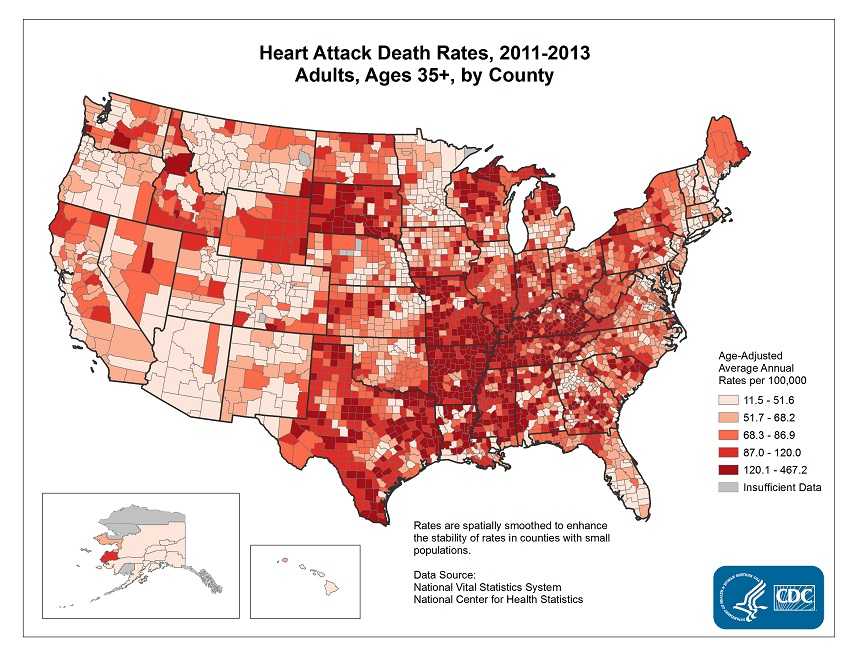Know the Signs and Symptoms of a Heart Attack
About Heart Attack
- A heart attack happens when the blood supply to the heart is cut off. Cells in the heart muscle that do not receive enough oxygen-carrying blood begin to die. The more time that passes without treatment to restore blood flow, the greater the damage to the heart.
- Every year about 790,000 Americans have a heart attack. Of these, 580,000 are a first heart attack and 210,000 happen in people who have already had a heart attack.1
- About 15% of people who have a heart attack will die from it.1
- Almost half of sudden cardiac deaths happen outside a hospital.2
- Having high blood pressure or high blood cholesterol, smoking, having had a previous heart attack or stroke, or having diabetes can increase your chance of developing heart disease and having a heart attack.
- It is important to recognize the signs of a heart attack and to act immediately by calling 911. A person’s chance of surviving a heart attack increases if emergency treatment is administered as soon as possible.

Source: Interactive Atlas of Heart Disease and Stroke.
Symptoms of a Heart Attack
The National Heart Attack Alert Program notes these major signs of a heart attack:
- Chest pain or discomfort. Most heart attacks involve discomfort in the center or left side of the chest that lasts for more than a few minutes, or that goes away and comes back. The discomfort can feel like uncomfortable pressure, squeezing, fullness, or pain.
- Discomfort in other areas of the upper body. Can include pain or discomfort in one or both arms, the back, neck, jaw, or stomach.
- Shortness of breath. Often comes along with chest discomfort. But it also can occur before chest discomfort.
- Other symptoms. May include breaking out in a cold sweat, nausea, or light-headedness.
If you think that you or someone you know is having a heart attack, you should call 911 immediately.
CDC’s Public Health Efforts Related to Heart Attack
For More Information
For more information on heart disease visit our Web site at https://www.cdc.gov/heartdisease/ and the Web sites of the following CDC partners:
- American Heart Association
- National Heart, Lung, and Blood Institute
- National Heart Attack Alert Program
References
- Benjamin EJ, Blaha MJ, Chiuve SE, Cushman M, Das SR, Deo R, et al. Heart Disease and Stroke Statistics—2017 Update: A Report From the American Heart Association. 2017; 135:e1–e458. DOI: 10.1161/CIR.0000000000000485.
- Zheng ZJ, Croft JB, Giles WH, Ayala CI, Greenlund KJ, Keenan NL, Neff L, Wattigney WA, Mensah GA. State Specific Mortality from Sudden Cardiac Death: United States, 1999. MMWR 2002;51(6):123–126.
- Page last reviewed: August 22, 2017
- Page last updated: August 22, 2017
- Content source:



 ShareCompartir
ShareCompartir